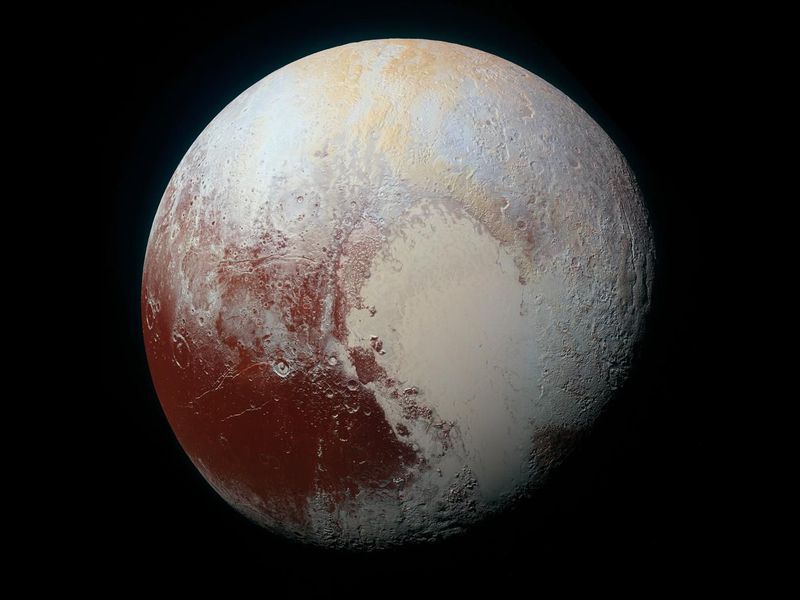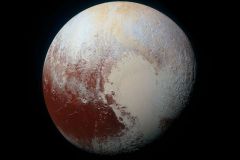Pluto has a heartbeat of sorts, according to a new study from NASA’s New Horizons team. Each day, sunlight hits the Sputnik Planitia basin—the left side of the heart—and nitrogen ice vaporizes. At night, Pluto’s temperature drops, and the vaporized nitrogen condenses back to ice. The cycle repeats every Plutonian day, which is about six and a half Earth days long, and powers the winds that shaped the dwarf planet’s landscape, per the study published on February 4 in the Journal of Geophysical Research.
Sources:
NASA-JHUAPL-SwRI (2020). Pluto picture. SmithsonianMag.com, Feb. 7, 2020. Accessed Feb. 2020 – https://www.smithsonianmag.com/smart-news/pluto-has-nitrogen-heartbeat-180974157/



